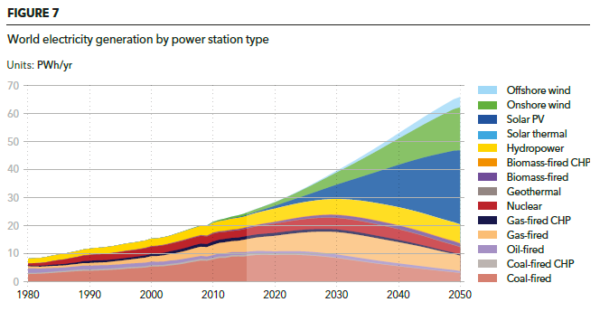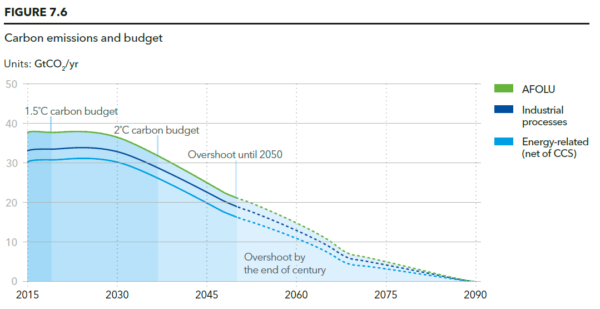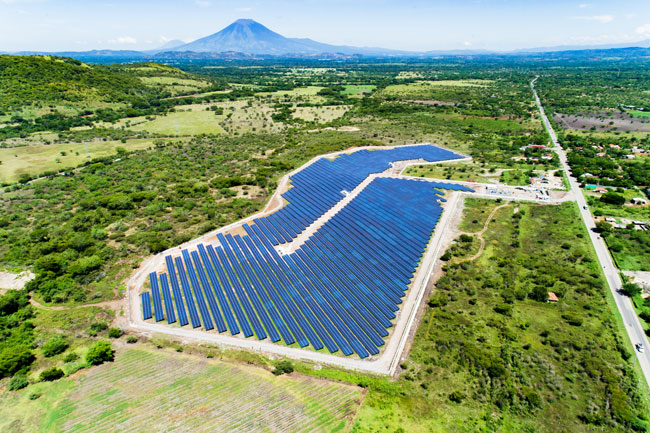Norwegian-based quality assurance and risk management company, DNV GL has released its annual Energy Transition Outlook (ETO 2018).
The report states that solar PV will be the biggest winner in the global energy transition. In other findings, it sees that the costs incurred by the energy transition will not surpass current fossil fuel investments, underlining that a move towards a low-carbon society is financially viable.
Despite rapid growth numbers for all renewable energy resources and positive developments in energy efficiency, the analysts conclude that current ambitions will fall short of meeting the Paris Agreement's 2°C target, set in 2015.
Strong growth
Solar PV will continue to surf a wave of success, the analysts suggest. DNV GL claims that global installed capacity will multiply by a factor of 65 until 2050. By that time, cumulative capacity will have reached 19 TW, accounting for 40% of the world's electricity production. Around 30% of this capacity is set to be installed on residential or commercial rooftops, while the remainder of 13.3 TW will account for ground-mounted utility-scale systems, it says, adding that cumulative land-use of ground-mounted systems is on track to account for 0.3% of the globe's total landmass.
The growth of renewables and solar PV, in particular, will be at the detriment of the fossil fuel industry. DNV GL says that the global demand for electricity will grow by a factor of 2.5 from now to 2050, while coal and gas-fired electricity generation will decrease by 60%.
With the increasing installation of variable renewable energy assets, storage systems are taking center stage in the energy systems of the future. The ETO 2018 stipulates that by 2050, around 50 TWh of storage capacity will be installed to cope with variable energy generation. Furthermore, the analysts calculate that it will be possible to utilize 10% of electric vehicle (EV) battery capacity for participation in grid services, to reduce the number of stationary storage systems.
Acknowledging that the situation could change with regards to EV adoption rates, and the willingness of EV owners to participate in such schemes, DNV GL estimates that the EV fleet in Europe in 2050 could provide nearly all of the storage needed for grid services.

Grid expenditure not PV’s cup of tea
Grid expenditure is rising steeply; however, the model used by DNV GL in its report, attributes this increased expenditure primarily to the increased demand for electricity, rather than an increase in renewables. Indeed, it says the costs attributed to grid resilience measures, resulting from the increasing installation of variable renewable energy, are considerably less than a third of the total expenditure.
The analysts assume in their calculation that global grid expenditure will rise from just under US$500 billion per year now, to roughly $1,500 billion per year in 2050. By 2050, grid expenditures attributed to reinforcements, due to increased variable renewable energy are expected to be around $350-400 billion per year in 2050.
Despite efforts to meet energy efficiency needs, an increasing number of people enjoying grid connection and a lifestyle with modern appliances will cause global energy demand to continue to rise by 0.9% annually. According to the report, current global energy demand it at about 400 exajoules (EJ) per year. Considering said growth in energy demand, the estimation presumes that global energy demand will peak in 2035 at 470 EJ per year. Following that, energy demand is likely to decline again, down to 450 EJ per year by mid-century.
Energy efficiency, thus, is becoming an important topic. Reportedly, India and China will be the only two regions with a notable increase in energy consumption per capita, between 2016 and 2050. China’s per capita energy consumption in 2016 reached 96 GJ and is likely to increase to 111 GJ. In India, consumption is set to increase from 26 GJ to 43 GJ throughout the same forecasting period. In contrast, North American consumption will decrease drastically, from 297 GJ to 136 GJ and in Europe, from 137 GJ down to 86 GJ. Overall, the world average will decrease from 78 GJ per person to 64 GJ per person.
Popular content
Furthermore, regions without energy excess today, mainly in Sub-Saharan Africa and India, will achieve comprehensive supply predominantly through off-grid PV systems. In these regions, it is also likely that off-grid PV systems will replace existing off-grid diesel gensets. According to the analysis, off-grid, PV will take a 50% and 30% share in those regions, respectively. Though energy consumption of the populations in these regions is generally low, it is worth bearing in mind that Sub-Saharan Africa and India account for considerably more than two billion people, thus amounting to a market of considerable size.
Energy transition finance
The ETO 2018 further calculates that investments in fossil fuels amounted to $3.4 trillion in 2016. These are projected to , and decrease to $2.1 trillion by 2050. Investments in non-fossil energy resources will experience a reverse trend throughout the forecasting period. While in 2016, global non-fossil investment reached $0.69 trillion, by 2050, that number is set to grow to $2.4 trillion.
The analysts also calculate that overall global energy expenditure will increase by 33%, from $4.5 trillion in 2016, up to $6 trillion in 2050. However, because global GDP is also expected to rise by a significant 130%, the proportion of global GDP invested in the world energy systems will decrease from 5.5% in 2016, down to 3.1% in 2050.
The report goes on to highlight that renewable energy assets are very capital expenditure heavy. Capex for renewable energy assets will surpass that of the fossil fuel sector by 2029, onwards. These lead to a shift from operational expenditures related to the acquisition of fuels for example, to capex. While in 2016, just 17% of the energy expenditure accounted for capex, it will climb up to 47% by 2050; though this marks the shift, rather than signalizing increasing expenditures. In this vein, the analysts also assume that system costs for solar PV and wind will drop at a rate of 16-18% for a doubling of capacity.
The report says on that matter, “The energy transition may still be financially challenging, given the heavier capex load from renewables and grid, but our forecast suggests it is unlikely to prove financially disruptive. If we chose to maintain the percentage of global GDP going to energy expenditure, then there is ample scope to accelerate the pace of change.”
Falling short of the Paris Agreement
According to the analysts' estimates, global energy-related carbon emissions amount to 32 gigatons (Gt), having remained somewhat flat over the last three years. Reportedly, emissions would continue the trend of remaining somewhat flat or rising slightly, to reach their peak in 2025, at roughly 3% higher than today. DNV GL’s report continues that after that, global carbon emissions will decline gradually, to 50% of their current levels (18Gt) by 2050.
Moreover, energy-related emissions from coal and oil are set to decline by 65% and 52%, respectively, by 2050, while gas-fired energy generation emissions are likely to rise by 6% in the same period. The analysts also have little hope in the potential for carbon capture storage (CCS), claiming that the technology will not capture more than 0.3 Gt, or 1.7% of global carbon emission in 2050.
The report concludes on a sobering note, reiterating the Paris Agreement carbon budget calculations, according to which the CO2 budget for 2°C is 2,900 Gt CO2, using the 66% (‘likely’) probability threshold reported by the IPCC. In this CO2 budget of 2,900 Gt, 800 Gt CO2-eq is already deducted from the total budget of 3,700 Gt CO2-eq, to allow for the non-CO2 emissions, such as methane (CH4).

Graph: DNV GL
Thereby, the analysts calculated with varying degrees of remaining carbon budgets, and probability thresholds. Resulting from this calculation, the analysts, estimate that the world will have used its carbon budget to meet to 1.5°C by 2021, already. Going from this scenario, the global carbon output will have exceeded the 2°C by 2037. And by 2050, global CO2 emissions will have overshot the 2°C target by 390 Gt of CO2.
“The figures suggest that the world is heading towards a level of warming of 2.6°C above pre-industrial global average levels in the second half of this century,” the analysts conclude.
This content is protected by copyright and may not be reused. If you want to cooperate with us and would like to reuse some of our content, please contact: editors@pv-magazine.com.



Dangerous climate change = 1.0° C.
We are at 1.2° C for 2018.
We are on track to hit 1.5° C by 2030 and 2.0° C by 2050.
Dangerous climate change = 350 ppm.
2018 = 406 ppm, 2030 = 430 ppm, 2050 = 480 ppm.
Runaway gets triggered between 1.5° and 2.0° C.
To avoid 1.5° C we must reduce emissions 50% in 10 years.
To avoid 2.0° C we must reduce emissions 100% in 20 years.
100% energy transitions take 50 years, minimum, because electricity production is only 20% of global energy demand.